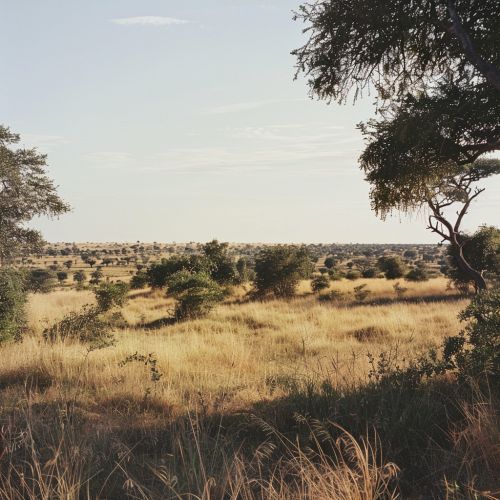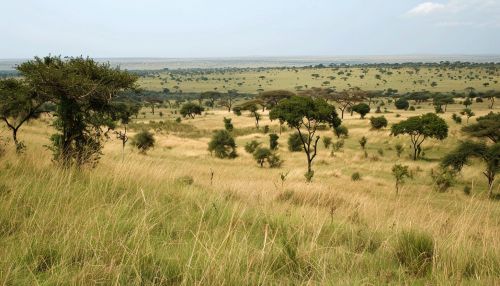Savanna
Introduction
The Savanna is a mixed woodland-grassland ecosystem characterized by the trees being sufficiently widely spaced so that the canopy does not close. The open canopy allows sufficient light to reach the ground to support an unbroken herbaceous layer consisting primarily of grasses. Savannas maintain an open canopy despite a high tree density. It is often believed that savannas feature widely spaced, scattered trees. However, in many savannas, tree densities are higher and trees are more regularly spaced than in forests.
Characteristics
Savannas are also characterized by seasonal water availability, with the majority of rainfall confined to one season. They are associated with several types of biomes, and are frequently in a transitional zone between forest and desert or grassland. Savanna covers approximately 20% of the Earth's land area.


Distribution
Savannas are found in many regions of the world with a warm climate. In Africa, savanna covers almost half of the continent, and is the continent's largest biome. Savannas are also found in South America, India, and Australia.
Climate
The climate of savanna is tropical with two distinct seasons - a wet season and a dry season. The amount of rainfall is such that it is able to support more than just drought-tolerant grasses, but is insufficient to support a forest ecosystem.
Flora and Fauna
The flora of the savanna includes a variety of grasses of different heights and coarseness, dispersed trees and shrubs. The fauna is diverse, including several types of large herbivores, carnivores, and birds.
Human Interaction
Historically, humans have used savannas for farming and hunting. In modern times, some savannas have been heavily impacted by human activities, such as logging, conversion to agriculture, and the introduction of non-native species.
Conservation
Conservation of savannas is crucial because they are home to a large number of plant and animal species. Some conservation efforts focus on limiting human impact, protecting areas of savanna from development, or restoring degraded savannas.
